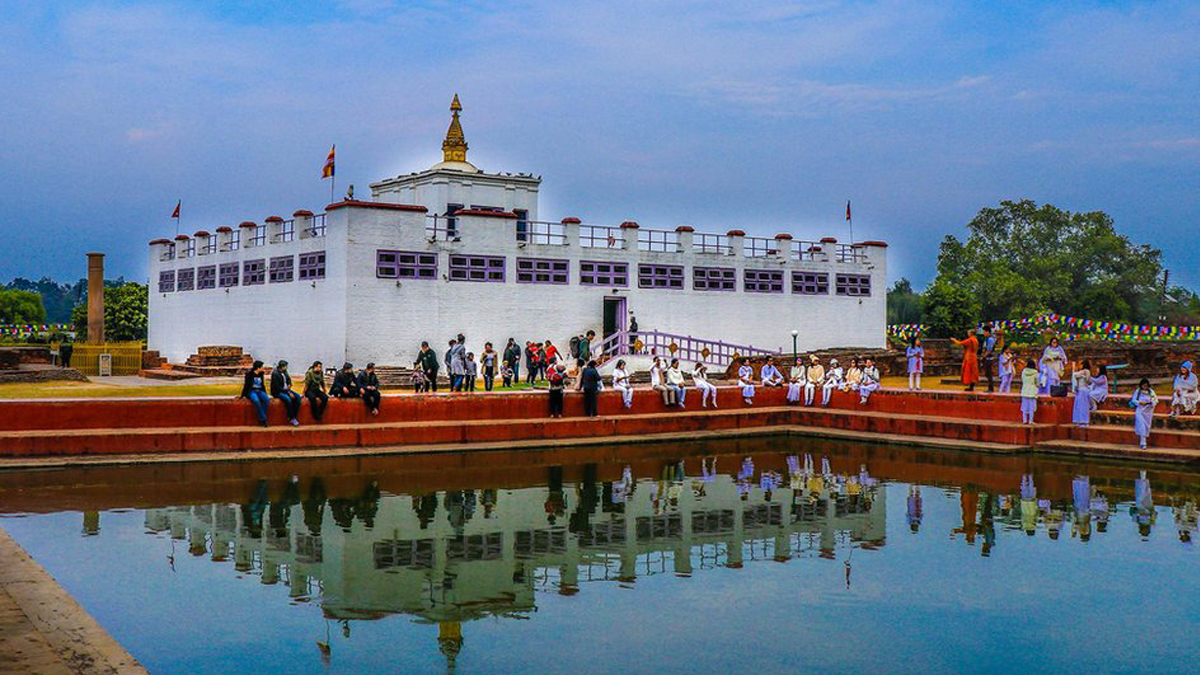
Lumbini Struggles to Reclaim Pre-Pandemic Tourism Numbers Despite National Recovery

Despite a notable national rebound in tourism figures, the sacred birthplace of Gautam Buddha, Lumbini, continues to grapple with the aftermath of the COVID-19 pandemic. Recent statistics reveal that while there is an overall improvement, the tourist influx has not yet returned to the levels observed in 2019.
In 2019, prior to the pandemic’s entry into Nepal, Lumbini welcomed a total of 1,558,326 Nepali and foreign visitors. However, in 2023, this number dropped to 998,938, indicating a slow recovery for the revered pilgrimage site.
The years 2020 and 2021 witnessed a near absence of tourists due to the pandemic, but as conditions improved in 2022, there was a gradual increase in visitor numbers. Nevertheless, the figures still fall short of the pre-pandemic peak.
One notable factor contributing to the lag in recovery is the hesitation among domestic tourists. In 2019, Lumbini hosted 1,178,140 Nepali visitors, but this figure plummeted by 45% in 2023, with only 656,218 Nepalis making the pilgrimage last year.
Tourist arrivals from third countries, excluding India, also experienced a significant decline, dropping by 56%. In 2019, 174,015 international visitors explored Lumbini, whereas in 2023, the number dwindled to 76,210.
However, a silver lining emerges as Lumbini recorded the highest influx of Indian tourists on record in 2023. With 266,510 Indian visitors, the site surpassed the 2022 figure of 230,863 and even exceeded the 2019 number of 206,171 Indian tourists.
In contrast, the chilling effect of late in the Kanchanjungha region has adversely impacted tourism, leading to a sharp decline in visitors. Tourism entrepreneur Pema Sherpa attributed the drop to severe cold, although there was no reported snowfall this year.
Hotels and lodges in the Kanchanjungha area have had to close due to the lack of visitors, prompting hoteliers to relocate to warmer areas like Phungling or Kathmandu. Tasi Tenjing Sherpa, associated with the Kanchanjungha Conservation Area Management Council, highlighted that the region experienced a significant tourist influx before the onset of extreme cold. From last Asoj to Poush, the area recorded the entry of 760 tourists from different countries, marking the highest since the onset of the COVID-19 pandemic.
- DRRMNC Urges Swift Action to Tackle Forest Fires and Accelerate Reconstruction Efforts
- Nepal Observes People’s Movement Day to Commemorate Restoration of Democracy
- Nepal and India Supreme Courts Sign MoU to Strengthen Judicial Cooperation
- Process to Provide Drinking Water to Dharan Moves Forward, PM Oli Confirms Mayor Harka












Comments